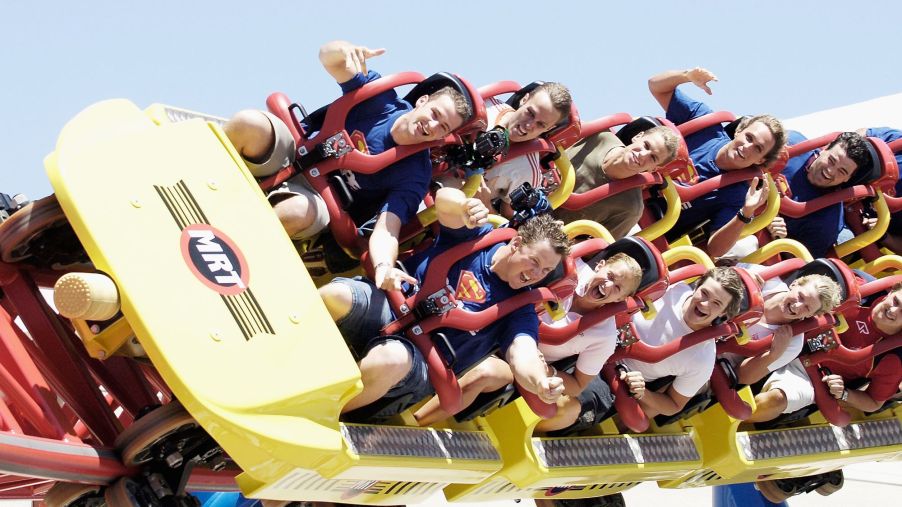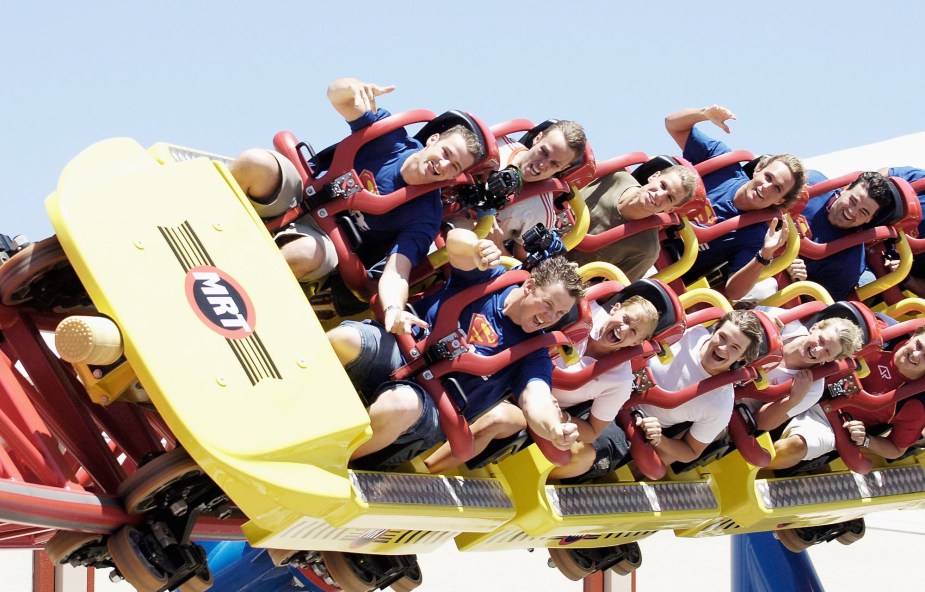
How Do Launched Roller Coasters Work, and Are They Safe?
Theme parks offer people a day of fun by letting them experience thrilling rides, like bumper cars or Ferris wheels. But, what seems to bring in the most money are the roller coaster rides with tracks that bend, twist, and go upside down, all while riding in rail cars. To keep these rides going, the park must perform daily or nightly maintenance and inspections to ensure everything’s working alright.
What makes a roller coaster go, how do they launch, and what can go wrong on these rides? Let’s take a look.
What’s behind the design of a roller coaster?

When you ride on a roller coaster, you get the thrill of speeding up, slowing down, and sometimes moving upside down. Using gravity, centripetal force, and inertia, a roller coaster designer, can set up a ride that will excite and keep the train moving along the tracks safely.
Roller coasters can go uphill, sometimes reaching heights up to 456 feet, like the Kingda Ka. It can also go downhill and run on twisting tracks to enable the cars to keep moving and control the speed at which you’re going to prevent serious accidents.
By strategically placing different types of tracks, the ride can keep moving without needing a motor to propel them along throughout the entire ride.
For a successful run, a ride needs a launch system to get you going, a chain lift to move the train car up a hill, and trim brakes to slow the train cars down or to make a stop during the ride. You’ll also need block brakes to stop the train at the end and computers to oversee the whole operation while the lift is in motion.
How does a launched roller coaster system work?
While there are several ways a roller coaster car launches during a ride, only a few of them are used regularly today. According to York Precision Machining & Hydraulics, the most popular launch systems are electromagnetic, hydraulic, and pneumatic. Flywheel, friction wheel, and catapult systems aren’t used nearly as often due to their limitations for today’s roller-coaster ride needs.
An electromagnetic system works by using a set of magnets, some on the rails and some on the bottom of the rail cars. Depending on what’s needed for the ride’s design, they will either attract or repel. This enables an engineer to control the speed more efficiently at the launch, which will help keep the rail cars moving throughout the ride.
When it comes to a hydraulic system, a sled under the train is propelled forward by a cable powered by the hydraulic motor. At a certain point in the launch, the sled will release the train cars and return to the starting area while the rail cars accelerate down the tracks. This works well when an engineer wants a smoother acceleration.
The pneumatic system works much like the hydraulic system, except it doesn’t use hydraulic fluid or nitrogen gas. It uses air to propel train cars forward. This system is more commonly associated with power tools powered by an air compressor. In this case, it’s used on a much larger scale. It’s so noisy, though, that it could turn off guests from potentially riding on the coaster.
What can go wrong with these systems?
Some people like to release steam after long work days, and a roller coaster is a great way to do that. But, to get the whole thrilling experience, everything needs to work properly, and you must arrive safely at its end. To ensure the roller coaster ride doesn’t have accidents while guests are on it, theme parks will take time to inspect all parts of the tracks and the railroad cars and address any issues they find.
Hydraulic systems have many moving parts, which means the cylinders can be prone to breaking down as time goes on. Care would need to be taken to ensure the hydraulic fluid remains at the level necessary for operation and there are no leaks in the system, nor are there any contamination of the fluid.
Parts used in the ride also need to be inspected to ensure none are loose. However, on occasion, accidents can still happen. According to Cleveland’s website, Cedar Point, a popular theme park in Ohio, had an unfortunate incident last year. One of the flag plates, from the back of a train, flew off after launch when the rail car was going at high speed. The piece hit a woman standing in line to get on the ride. She had severe head injuries and had to be life-flighted to a hospital in Toledo.
Cedar Point’s theme park was not found to be negligent in the end due to the lack of evidence to say otherwise. The part was inspected the night before the incident and was found to be tight, so something happened after that to loosen it up and make it lose connection from the train car.
Accidents happen occasionally, but theme parks do everything they can to prevent them so guests can still have a thrilling but safe experience at the park.


